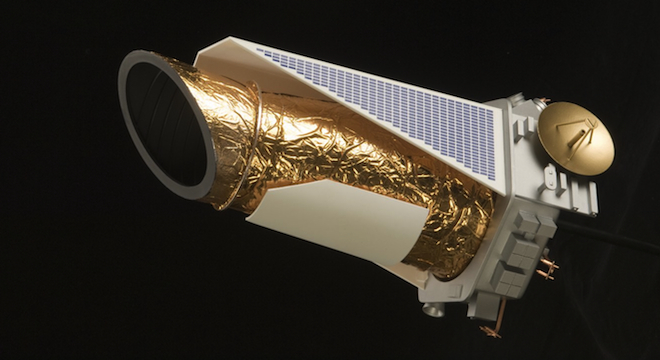“Four more years! Four more years!” No, that’s not a belated Presidential endorsement chant coming out of NASA, but rather the official word that the Kepler Space Telescope’s working life has been extended another four years.
“It’s been approved up to four years,” NASA spokesperson Michele Johnson told TPM in a phone interview. “We have funding to continue the search through 2016.”
That’s great news for all the scientists and astronomers and the rest of us here on planet Earth who are interested in finding other worlds that are habitable — that is, with the delicate conditions necessary to support life as we know it.
After all, Kepler has over the course of its first three-and-a-half years (the prime mission) made numerous exciting discoveries, including 2,321 planet candidates and 105 confirmed extrasolar planets — planets outside the solar system.
Among them have been such awe-inspiring finds as a Tatooine-like planet orbiting two stars, an unlikely planet in a quadruple star system, and at least one planet so far that is a likely candidate for life.
Specifically, NASA’s Kepler Space Telescope is a photometer, or light measuring telescope that continuously monitors over 100,000 stars simultaneously from its vantage point in orbit around the Sun, following its launch in March 2009. Kepler hunts for Earthlike worlds located around their stars in the habitable zone, or “Goldilocks zone,” the distance from a star where a planet is neither too hot nor too cold to have liquid water on its surface. It does so through the transit method- detecting the minute decreases in brightness from stars that are caused when planets move in front of them from Kepler’s perspective. The Kepler instrument needs to record three such transits before it can determine a likely candidate planet.
Now that Kepler’s mission has been extended, the spacecraft and the scientists studying its data will follow-up on all of the potential transits captured so far and continue to look for new ones.
“We have just short of 250 candidates that we’ve captured and recorded as Earth size,” Johnson told PTM. “Those we’ll continue to follow up on, and as we collect more data, well also find more candidates in the mix.”
The Kepler mission’s namesake, 17th century German astronomer Johannes Kepler, who devised influential and still-accurate laws of planetary motion, would surely be proud.






